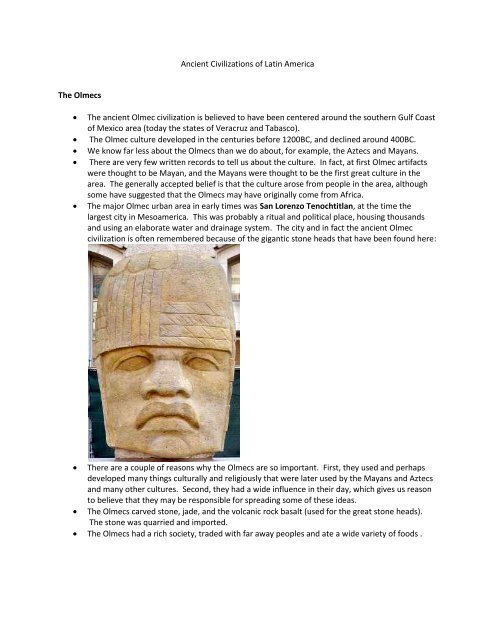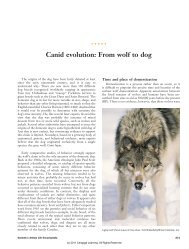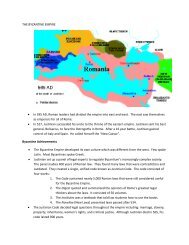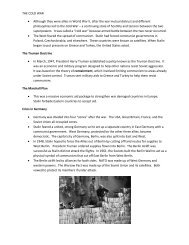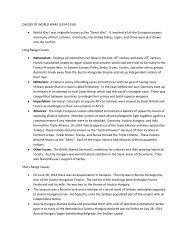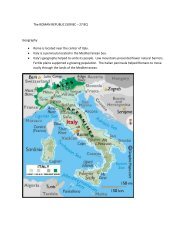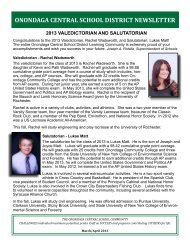File ancient civilizations of latin america.pdf
File ancient civilizations of latin america.pdf
File ancient civilizations of latin america.pdf
You also want an ePaper? Increase the reach of your titles
YUMPU automatically turns print PDFs into web optimized ePapers that Google loves.
Ancient Civilizations <strong>of</strong> Latin America<br />
The Olmecs<br />
<br />
<br />
<br />
<br />
<br />
The <strong>ancient</strong> Olmec civilization is believed to have been centered around the southern Gulf Coast<br />
<strong>of</strong> Mexico area (today the states <strong>of</strong> Veracruz and Tabasco).<br />
The Olmec culture developed in the centuries before 1200BC, and declined around 400BC.<br />
We know far less about the Olmecs than we do about, for example, the Aztecs and Mayans.<br />
There are very few written records to tell us about the culture. In fact, at first Olmec artifacts<br />
were thought to be Mayan, and the Mayans were thought to be the first great culture in the<br />
area. The generally accepted belief is that the culture arose from people in the area, although<br />
some have suggested that the Olmecs may have originally come from Africa.<br />
The major Olmec urban area in early times was San Lorenzo Tenochtitlan, at the time the<br />
largest city in Meso<strong>america</strong>. This was probably a ritual and political place, housing thousands<br />
and using an elaborate water and drainage system. The city and in fact the <strong>ancient</strong> Olmec<br />
civilization is <strong>of</strong>ten remembered because <strong>of</strong> the gigantic stone heads that have been found here:<br />
There are a couple <strong>of</strong> reasons why the Olmecs are so important. First, they used and perhaps<br />
developed many things culturally and religiously that were later used by the Mayans and Aztecs<br />
and many other cultures. Second, they had a wide influence in their day, which gives us reason<br />
to believe that they may be responsible for spreading some <strong>of</strong> these ideas.<br />
The Olmecs carved stone, jade, and the volcanic rock basalt (used for the great stone heads).<br />
The stone was quarried and imported.<br />
The Olmecs had a rich society, traded with far away peoples and ate a wide variety <strong>of</strong> foods .
The Chavin<br />
<br />
<br />
<br />
<br />
<br />
<br />
<br />
<br />
<br />
The Chavin culture existed in what is known today as the modern state <strong>of</strong> Peru.<br />
Early Peruvian civilization can be traced back to the peopling <strong>of</strong> the New World, dating back to<br />
the crossing <strong>of</strong> the Bering Land Bridge by Asiatic hunters long before 15,000 years ago. It is<br />
believed that between 10,000 and 14,000 years ago some <strong>of</strong> these people began peopling the<br />
Peruvian Andes. About 10,000 years <strong>of</strong> development took place before any civilization was<br />
organized.<br />
The best known civilization <strong>of</strong> early Peruvian prehistory is Chavin. Chavin is one <strong>of</strong> Peru's oldest<br />
<strong>civilizations</strong> and laid the cultural foundations <strong>of</strong> all later Peruvian <strong>civilizations</strong>. The Chavin culture<br />
flourished from 900 BCE to 200 BCE.<br />
It is evident that the people <strong>of</strong> Chavin held religious beliefs due to many artifacts re<strong>latin</strong>g to<br />
religious ceremonies that have been excavated.<br />
Large shells were transformed into musical instruments by drilling holes in them so they could<br />
be played as horns.<br />
Several objects are believed to have been used in the ceremonial ingestion <strong>of</strong> hallucinogens<br />
such as small mortars that were used to grind vilca, a sort <strong>of</strong> hallucinogenic snuff. Other objects<br />
used for these purposes are bone tubes and spoons. Those items were decorated with<br />
impressions <strong>of</strong> wild animals that are associated with shamanistic transformation.<br />
The Chavin culture is known for its beautiful art and design but Chavin was also innovative with<br />
metallurgy and textile production. Cloth production was revolutionized during the time <strong>of</strong><br />
Chavin. New techniques and materials included the use <strong>of</strong> camel<br />
hair, textile painting, the dying <strong>of</strong> camel hair and the "resist"<br />
painting style similar to modern day tie-dye.<br />
Advances in metallurgy also occurred during the Chavin's reign in<br />
Peru such as joining pieces <strong>of</strong> preshaped metal sheets to form<br />
both objects <strong>of</strong> art and objects for practical use. Soldering and<br />
temperature control were also advanced during this time.<br />
An important factor <strong>of</strong> the Chavin culture is its art, which can<br />
seem very puzzling to the untrained eye. Chavin designs can be<br />
appreciated only as abstract patterns, but there is almost always<br />
representational meaning behind them. Chavin art bears some<br />
resemblance to Olmec art suggesting that there may have been<br />
some degree <strong>of</strong> influence between the two cultures.


